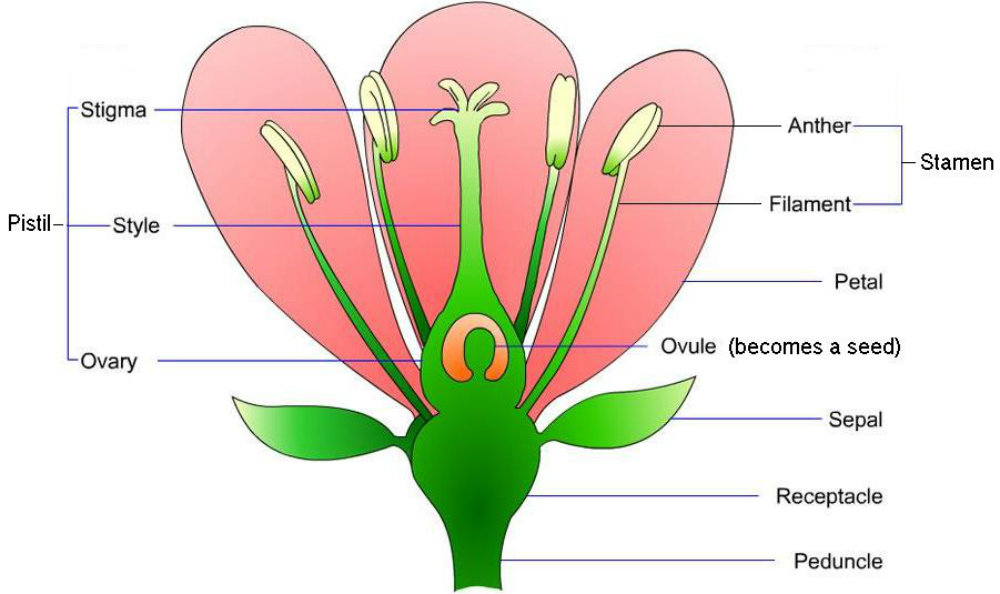About Flowers
For centuries people in cultures around the world have used and cultivated flowers for their beauty, food and medicine. The first record of flowers being cultivated was from a Sumerian herbal of 2200 BC. In the 5th century BC Hippocrates listed 400 herbs in common use and by 1st century AD, Dioscorides recorded 600 plants in medicinal remedies.
In the Dark Ages, superstition was rampant. Many flowers where thought to have magical powers and where used in many rituals. Today most people enjoy flowers for their beauty, the effects of their scent on our bodies and to attract love. However, with more and more people looking to live a healthier lifestyle, flowers are becoming more popular for their medicinal uses and as part of a healthy diet.
Parts of Flowers
Flowers have a variety of different parts. See the diagram to the left to identify what each part of the flower is.
 Peduncle: The stalk or stem of a flower.
Peduncle: The stalk or stem of a flower.
Receptacle: The part of a flower stalk where the parts of the flower are attached.
Sepal: The outer parts of the flower (often green and leaf-like) that enclose a developing bud.
Petal: The parts of a flower that are often conspicuously colored.
Stamen: The pollen producing part of a flower, usually with a slender filament supporting the anther.
Anther: The part of the stamen where pollen is produced.
Pistil: The ovule producing part of a flower. The ovary often supports a long style, topped by a stigma. The mature ovary is a fruit, and the mature ovule is a seed.
Stigma: The part of the pistil where pollen germinates.
Ovary: The enlarged basal portion of the pistil where ovules are produced.
Filament: Holds the anther
Style: The tube at the top of the ovary
© 1stChineseHerbs.com 2016
Reference
http://www.stavacademy.co.uk/mimir/herbsarticle.htm
Image source: http://grandpacliff.com/Plants/Img-Plants/flower-parts-pt.jpg - obtained in search for "Free to modify, share and use" 3-25-2016
